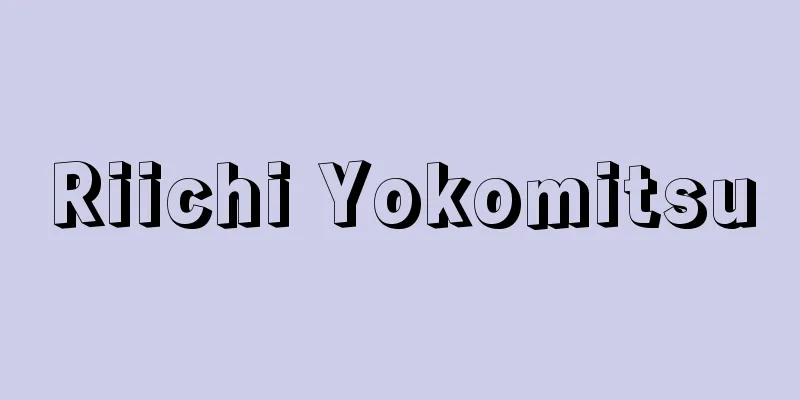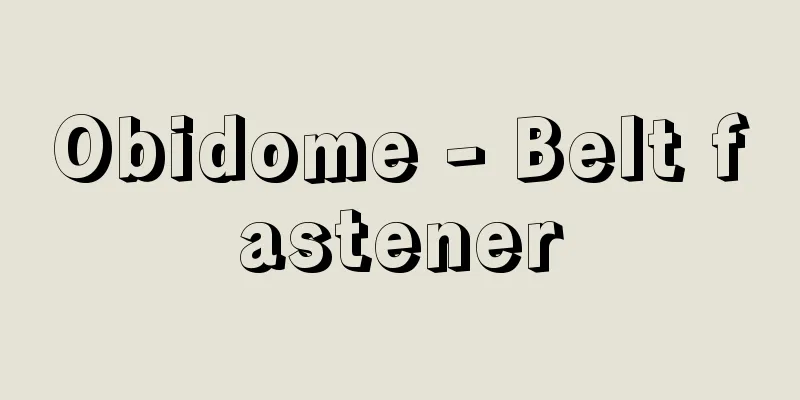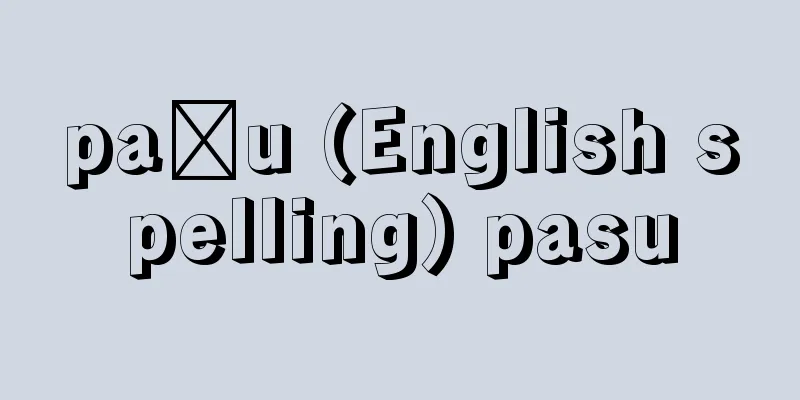Riichi Yokomitsu

|
Novelist. Born on March 17, 1898 (Meiji 31) in Higashiyama Onsen, Fukushima Prefecture, but his registered domicile is Oita Prefecture. He moved around a lot with his father, a civil engineering contractor, and finished middle school in his mother's hometown of Iga, Mie Prefecture. In 1916 (Taisho 5), he entered the preparatory school of Waseda University. During his time at Waseda, he became friends with Nakayama Yoshihide, Sato Ichiei, and Yoshida Issui, but he dropped out rather than focus on his studies. In 1921, he founded the coterie magazine Machi with Tominosawa Rintaro and Fujimori Junzo, and in 1922, he founded To with Nakayama Yoshihide and Kojima Tsutomu, and aspired to become a writer. In 1923, he joined the magazine Bungeishunju, founded by Kikuchi Kan, and that same year, he rose to prominence in the literary world with works such as Nichirin and Hae. In 1924, he founded Bungei Jidai with Kawabata Yasunari, Kataoka Teppei, and Kon Toko, and his short story Head and Belly, published in the magazine, earned him the nickname "Shinkankakuha." Bungei Jidai was noted as the stronghold of Japanese "Expressionism" until the early Showa period. In 1925, he wrote the critique Sensuous Activity, setting the stage for the theory of so-called "formalist literature," which viewed proletarian literature as its virtual enemy. Around this time, he had already been paying attention to the linguistic theories of Saussure and Shklovsky. From 1928 (Showa 3) to 1931, he wrote his first full-length novel, Shanghai, in which he localized the Western invasion (the White Calamity) to the city of Shanghai, hinting at Asian solidarity. During that time, in 1930, he wrote The Machine, in which he attempted to portray psychological mechanisms to the fullest extent. He actively participated in Literature, Poetry and Poetics, and Works, which dominated literary theory in the early Showa period, and attempted to methodize the influence of Gide and Valéry through Kawakami Tetsutaro and Kobayashi Hideo. His collection of critiques and essays, Kakikatazoushi (Calligraphy and Writing) (1931), tells the tale. In 1933, he became a member of the Bungakukai. After the collapse of proletarian literature, he wrote Crest (1934), Family Conference (1935), and others. In 1935, he put forward the theory of the "pure novel," which he called "pure literature and popular novels," and advocated the benefits of full-length novels. In 1936, just before the February 26 Incident, he left Japan for Europe. During his six months in Europe, he reawakened his sense of the essential difference between the East and the West, and he compiled Oushuu Kikou (Travels in Europe) (1937) and began work on his unfinished masterpiece Tabishū (Sorrow of a Journey). Written from the 1930s through the postwar period, Tabishū (Sorrow of a Journey) is an ambitious work that attempts to portray Japan's era of war and peace. His other works include Yoru no Kutsu (Shoes of the Night) (1947), which convey his state of mind during and after the war. He died on December 30, 1947. [Yoshiki Kuritsubo] "The Complete Works of Yokomitsu Riichi, 16 volumes (1981-1987, Kawade Shobo Shinsha)" ▽ "The Complete Works of Showa Literature 5: Yokomitsu Riichi and Others" (1986, Shogakukan) [References] | | | | | | | | | | Nakayama| | | | |Source: Shogakukan Encyclopedia Nipponica About Encyclopedia Nipponica Information | Legend |
|
小説家。1898年(明治31)3月17日福島県東山温泉に生まれる。ただし、本籍は大分県。土木請負業の父とともに各地を転々とし、母の郷里三重県伊賀(いが)で中学を終え、1916年(大正5)早稲田(わせだ)大学高等予科に入学。早大時代は、中山義秀(ぎしゅう)、佐藤一英(いちえい)、吉田一穂(いっすい)らと交友したが、学業に専念せず中退。1921年、富ノ沢麟太郎(りんたろう)、藤森淳三(じゅんぞう)らと同人誌『街』、1922年、中山義秀、小島勗(つとむ)らと『塔』を創刊、作家を志す。1923年、菊池寛(きくちかん)創刊の『文芸春秋』に参加、この年『日輪(にちりん)』『蠅(はえ)』などの作品により文壇登竜を果たす。1924年、川端康成(やすなり)、片岡鉄兵(かたおかてっぺい)、今東光(こんとうこう)らと『文芸時代』を創刊、同誌掲載の短編小説『頭ならびに腹』により「新感覚派」と呼称されるようになる。『文芸時代』は、昭和初年代に至る、日本の「表現主義」の牙城(がじょう)として注目された。1925年、評論『感覚活動』を書いて、プロレタリア文学を仮想敵とした、いわゆる「形式主義文学」論の先鞭(せんべん)をつける。このころ、すでにソシュール、シクロフスキーなどの言語論に注目していた。1928年(昭和3)から1931年まで初の長編『上海(シャンハイ)』を書き、西洋の侵略(白禍)を都市上海に局限して、アジアの連帯をにおわせた。その間、1930年には『機械』を書いて、心理のメカニズムを極限まで描こうとする。昭和初年代の文学理論を支配した『文学』『詩と詩論』『作品』などに積極的に参加し、河上徹太郎、小林秀雄らを通じて、ジッド、バレリーの影響を方法化しようとする。評論・随筆集『書方草紙(かきかたぞうし)』(1931)がそれを物語る。1933年『文学界』同人となる。プロレタリア文学壊滅後、『紋章』(1934)、『家族会議』(1935)などを書く。1935年『純粋小説論』に集約される「純文学にして通俗小説」という「純粋小説」理論を打ち出し、長編小説の効用を説く。1936年、二・二六事件の直前、日本をたち欧州に向かう。約半年のヨーロッパ滞在により、いわゆる「西洋と東洋」の本質的な異和の観念を呼び覚まし、『欧洲(おうしゅう)紀行』(1937)をまとめ、未完の大作『旅愁』にとりかかった。昭和10年代から戦後にまで及んで執筆された『旅愁』は、日本の「戦争と平和」の時代を描出しようとする野心に燃えた作品であった。戦中・戦後の心境を伝える『夜の靴』(1947)がある。昭和22年12月30日没。 [栗坪良樹] 『『定本横光利一全集』全16巻(1981~1987・河出書房新社)』▽『『昭和文学全集5 横光利一他』(1986・小学館)』 [参照項目] | | | | | | | | | | | | | | |出典 小学館 日本大百科全書(ニッポニカ)日本大百科全書(ニッポニカ)について 情報 | 凡例 |
Recommend
Bertillonage
...Without looking at a photograph of a particula...
ceramic
...In Japan, the term "douki" (earthenw...
Diffusionism
...This transmission of stimuli or ideas is thoug...
Bouvardia
A genus of the Rubiaceae family with about 30 spec...
cena prima (English spelling)
… Their main meal was dinner (cena), which usuall...
Neo-Oriental Movement - Neo-Oriental Movement (English name)
A general term for the interest in and practices b...
Dussek, JL (English spelling) DussekJL
… Finally, the European repertoire of harp music ...
School of learning
[1] 〘noun〙① A room for studying. A study. A writin...
Asagi curtain - Asagimaku
A type of curtain used in Kabuki plays. It is ligh...
kōmōidia (English spelling) komoidia
...Needless to say, this does not diminish the un...
Wagner, E.
…His real name was Ernst Wagner. He is one of the...
CCU - CCU
Coronary Care Unit. An intensive monitoring and t...
Uemachi - Uemachi
The common name for the Kamimachi Plateau, east of...
Oeshiki - Oeshiki
Originally, it meant a gathering and a ceremony, ...
Rhododendron formosanum (English spelling) Rhododendronformosanum
…[Masaaki Kunishige]. … *Some of the terminology ...


![Evros [river] - Evros](/upload/images/67cfaa2790b3d.webp)






